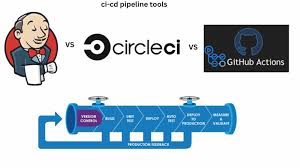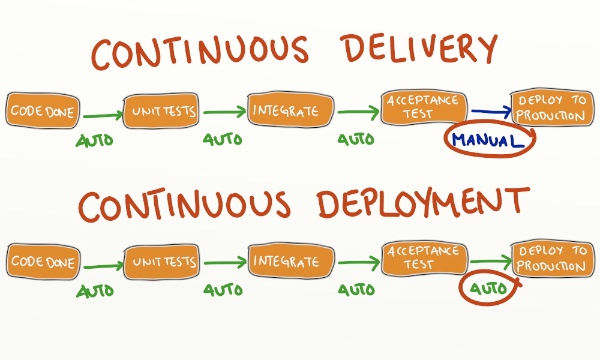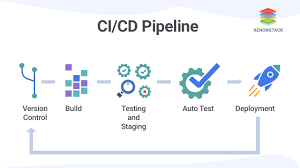Before Continuous Integration and Continuous Delivery/Deployment

Imagine you’re baking a cake with a team, but no one tastes the batter until it’s in the oven. Disaster, right? Software development used to feel like that—code piled up, bugs hid in the shadows, and releases were a gamble. Then came Continuous Integration (CI) and Continuous Delivery/Deployment (CD), the secret sauce behind how modern teams ship reliable software fast. In this post, we’ll unpack what CI/CD is, how it works, and why it’s a game-changer. Ready to level up your dev game? Let’s dive in.
So, What is Continuous Integration?
Continuous Integration is like a safety net for developers. Picture a team working on an app—everyone’s coding features, fixing bugs, and tweaking designs. Instead of waiting weeks to merge their work, they commit changes to a shared repository (think GitHub or GitLab) daily, even hourly. Each commit triggers an automated system that builds the app and runs a suite of tests. If something breaks—a typo, a failed test, a missing semicolon—the team knows right away.
The magic? Automation. Tools like Jenkins, GitHub Actions, or CircleCI handle the heavy lifting, catching issues before they spiral into “who broke the build?” blame games. CI isn’t just about speed; it’s about confidence. You’re not just writing code—you’re proving it works, every step of the way.

Continuous Delivery vs. Continuous Deployment: What’s the Difference?

Now, let’s talk about the “CD” part—and yes, it’s got two flavors.
Continuous Delivery builds on CI. After your code passes the build-and-test gauntlet, it’s automatically packaged and sent to a staging environment—think of it as a dress rehearsal before the big show. The catch? Deployment to production still needs a human green light. It’s like having a perfectly baked cake ready to serve, but you decide when to cut the first slice. This setup ensures every change is deployable, giving teams flexibility and control.
Continuous Deployment kicks it up a notch. Here, every passing change goes straight to production—no pit stops, no manual approvals. It’s the software equivalent of an assembly line: code in, product out. Companies like Netflix and Amazon use this to deploy thousands of updates daily. Sound risky? It is—unless your automated tests are rock-solid. One weak link, and you’re shipping bugs to users faster than you can say “rollback.”
Both approaches speed up releases, but Continuous Deployment is the bolder sibling. Which one’s right for you? That depends on your team’s appetite for automation—and your trust in your test suite.
How CI/CD Works Together
So, how do these pieces fit? Picture a pipeline—a smooth flow from code to customer:
- Commit: A developer pushes code to the repository.
- Build: The CI system compiles the app and checks for errors.
- Test: Automated tests (unit, integration, UI) run to catch bugs.
- Deploy: In Continuous Delivery, it’s staged; in Continuous Deployment, it’s live.

Why CI/CD Matters
Still wondering if it’s worth the hype? Here’s the payoff:
- Fewer Bugs: Catching issues early means less firefighting later.
- Faster Releases: Teams using CI/CD ship 30x more often (per the DORA State of DevOps report).
- Happier Teams: No more “merge hell” or last-minute scrambles.
- Delighted Users: Frequent updates keep your app fresh and competitive.
Take Etsy, for example. They went from deploying every few weeks to dozens of times a day with CI/CD. The result? Quicker fixes, new features, and a better user experience. That’s the power of moving fast without breaking things.
Getting Started with CI/CD
Ready to try it? You don’t need to overhaul everything overnight. Here’s a beginner-friendly roadmap:
- Start Small: Automate your tests first. Even a basic unit test suite is a win.
- Pick a Tool: GitHub Actions is free and beginner-friendly; Jenkins is powerful for bigger setups.
- Build the Pipeline: Set up a simple flow—commit, build, test. Add deployment later.
- Test Like Your Life Depends On It: Weak tests = weak CI/CD. Invest here.
- Involve the Team: CI/CD thrives on collaboration. Get buy-in early.
Don’t aim for perfection—aim for progress. Your first pipeline might just check code syntax, and that’s okay. Iterate as you go.
Wrapping Up: CI/CD is Your Superpower
Continuous Integration and Continuous Delivery/Deployment aren’t just buzzwords—they’re how modern software gets built. CI keeps your code healthy; CD gets it into users’ hands fast. Together, they turn chaotic dev cycles into a calm, predictable process. Whether you’re a solo coder or part of a sprawling team, CI/CD can save you time, stress, and late-night debugging sessions.
So, what’s your next step? Set up a basic CI pipeline this weekend. Play with a tool. See how it feels to catch a bug before it bites. You’ve got this
